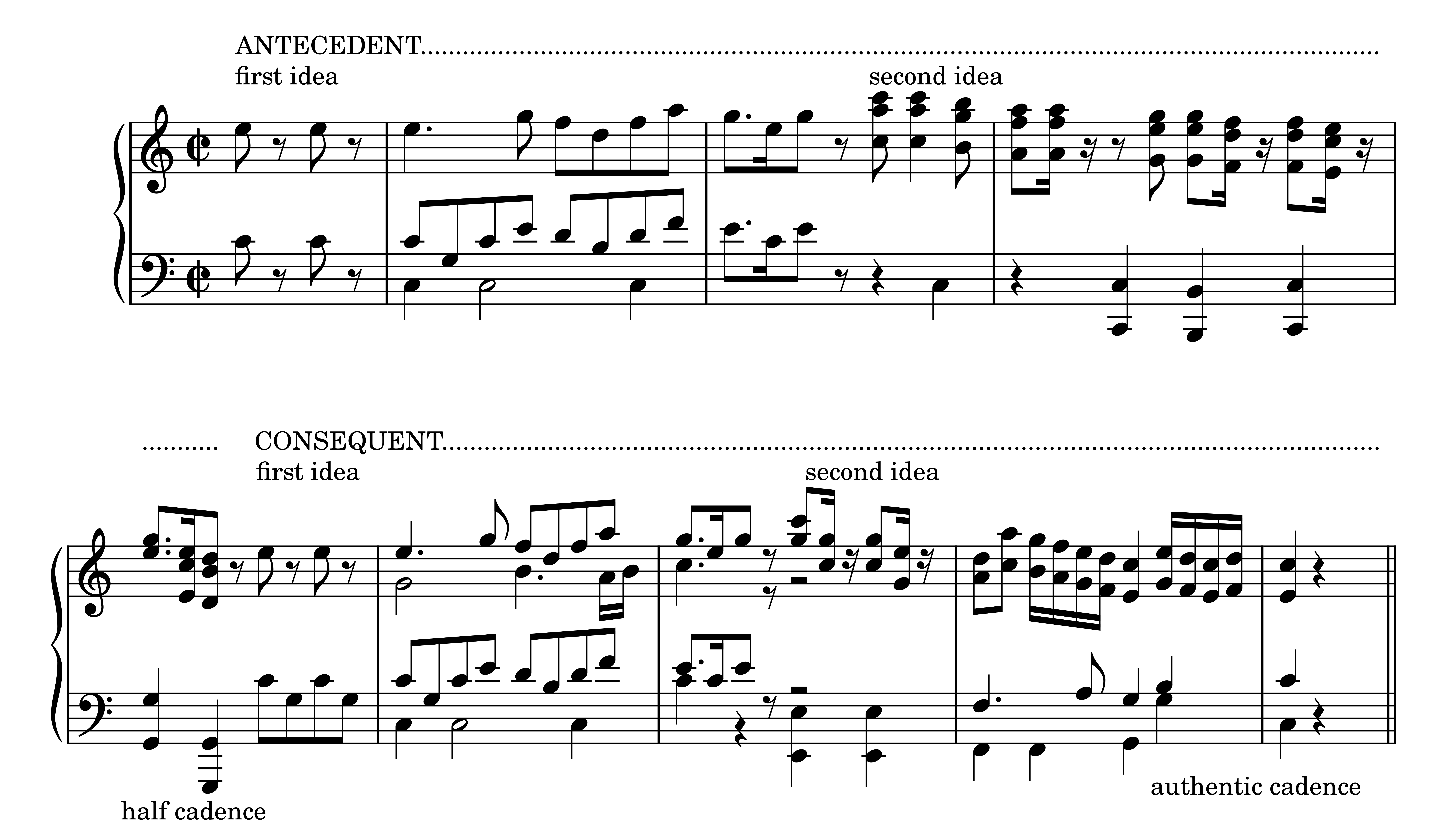Introduction to Diatonicism
8 Ear Training – What Is Diatonicism?
Q. What Is Diatonicism?
The materials we are studying – intervals, scales, chords, rhythm, melody, and harmony – come from diatonic melody and harmony.
When we talk about “diatonicism,” we mean melody and harmony that are composed from elements of the diatonic (“white key”) scale and its modes. Many forms of classical and popular music are diatonic, and work under related principles.
Intervals
We will study all the simple intervals, i.e. all the intervals contained within the range of an octave. All simple intervals can be found between pairs of pitches of the diatonic scale without the need for adding extra accidentals.
Scales and Modes
We will study major, natural minor, melodic minor (different ascending and descending), harmonic minor, plus Ionian, Dorian, Phrygian, Lydian, Mixolydian, Aeolian, and Locrian modes.
For example, in the first movement of Mozart’s Piano Sonata in C Major K. 545, within a C major context, we can see several examples of modal scales.

Chords
We will study four types of triads (three-note chords) in their commonest contexts:
- major: do mi sol OR sol ti re
- minor: la do mi OR do me sol
- diminished: ti re fa
- augmented: sol ti ri
In addition to triads, we will also study five types of seventh chords (four-note chords consisting of a triad plus an additional seventh degree):
- fully diminished: ti re fa le
- half diminished (also known as diminished minor): ti re fa la OR re fa le do
- minor minor: la do mi sol OR re fa la do
- major minor: sol ti re fa
- major major: do mi sol ti
All of these chords have very specific uses in diatonic harmony.
Rhythm and Meter
We will study simple time signatures such as 2/4, 3/4, 4/4, and 2/2, and compound time signatures such as 3/8, 6/8, 9/8, and 12/8. We will study rhythmic procedures such as divisions and subdivisions of the beat.
Melody
- Diatonic melodic phrases, especially those from the classical era and beyond, typically fall into two types: (1) the sentence, and (2) the period. Diatonic melodies are often derived largely from chords I, IV, V, and V7.
- Diatonic melodies use predictable cadence patterns.
- Diatonic melodies often repeat the same “ideas,” sometimes exactly and sometimes with different tones.
For example, the phrase structure in the first movement of Mozart’s Piano Sonata in G Major K. 283 features an idea which is then repeated in mm. 3-4. After this, the phrase continues, using elements from the opening idea, towards an imperfect authentic cadence (V7-I).

In this example from the second movement of Mozart’s Eine kleine Nachtmusik, by contrast, two different “ideas” take place within a broader antecedent. An antecedent is a “question” that is answered by a consequent in which the two ideas are brought back.

Harmony
The most common chords in diatonic harmonic progressions are: the tonic triad (I),the dominant triad (V), the dominant seventh chord (V7), and the subdominant triad (IV).
Looking again at Mozart’s C major piano sonata, we can find these chords within the first few measures. Measure 1 features chord I. Measure 2 contains the tones from the V7 chord (in its second inversion). Measure 3 contains tones from the subdominant triad and the tonic triad. Measure 4 features both chord V (inverted) and chord I. It’s a good idea to memorize the tones of I, V, V7, and IV, and the “colors” of how they sound in music. They are essential to the understanding of basic harmony.

Overview
In general, diatonic melodies and harmonies move in very predictable ways. If you learn the typical patterns of melodic shapes and harmonic progressions, identifying elements in isolation becomes much easier.
Further (Compulsory) Listening
It’s a good idea to familiarize yourself with the diatonic styles of classical composers, particularly Wolfgang Amadeus Mozart. We will study many examples of Mozart’s music in this resource. The best thing you can do to increase your understanding of diatonic style is to listen widely and voraciously to recordings of it. Try Mozart’s piano and instrumental sonatas, string quartets, concertos, symphonies, and operas. To get you started, this Spotify playlist has recordings of the compositions discussed in this chapter, plus some extras that also exemplify the patterns described above.

